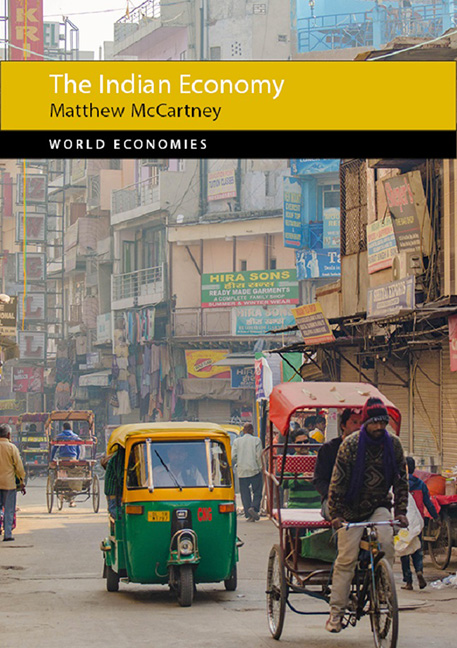Book contents
- Frontmatter
- Dedication
- Contents
- Acknowledgements
- List of Tables and Figures
- Maps
- 1 Introducing the Indian economy, 1947–2017
- 2 The Indian economic story since 1947
- 3 Measuring economic and human development
- 4 The form of the Indian economy
- 5 Human factors in the Indian economy
- 6 Making the Indian economy unique
- Conclusion: prospects for the Indian economy
- References
- Index
1 - Introducing the Indian economy, 1947–2017
Published online by Cambridge University Press: 09 August 2023
- Frontmatter
- Dedication
- Contents
- Acknowledgements
- List of Tables and Figures
- Maps
- 1 Introducing the Indian economy, 1947–2017
- 2 The Indian economic story since 1947
- 3 Measuring economic and human development
- 4 The form of the Indian economy
- 5 Human factors in the Indian economy
- 6 Making the Indian economy unique
- Conclusion: prospects for the Indian economy
- References
- Index
Summary
It seems obvious to begin a book about contemporary India in 1947, the moment the British Indian Empire became just India (and Pakistan). But it does need justification. Some scholars have emphasized 1947 as being more about continuity. Gradual political change, such as the 1909 Morley-Minto Reforms and 1935 Government of India Act had slowly increased both the number of Indians able to vote and the participation of Indians in political office. After 1937 Indian politicians formed governments to rule at state level while the British political presence was increasingly being squeezed out of day-to-day local politics and became ever more isolated at the highest levels of government. During the Second World War the British Indian Army expanded rapidly through the recruitment of Indian soldiers and senior officers. While almost entirely British in the 1930s only around half the officers of the elite Indian Civil Service (ICS) were British by 1946. As this book shows later rapid growth of Indian owned business, particularly in consumer goods but also in banking, shipping and iron and steel had also reduced the predominant economic role of Britain in India by 1947.
But 1947 is crucial.
The year marked much more than just a change in personnel at the top of government. The British colonial government was very much in power until independence. In 1939 Britain declared war on behalf of India without local consultation and mobilized the entire country for soldiers and supplies. In 1942 the mass anti-British Quit India Movement was crushed and its leadership easily rounded up and imprisoned. Independence in 1947 marked a real change in political power relations. The year also saw a real change in the foundation of political power from a very restricted voting franchise to democracy based on a universal franchise, which rejected property, gender and education qualifications. The British had long rejected universal franchise. The final legislatures elected under British rule in 1946 had rested on an electorate of 30 million people, or less than 10 per cent of the population. Independence was also scarred by the horrors of partition which saw British rule across the sub-continent being replaced by two independent nations, India and Pakistan (then comprising West and East Pakistan, the latter becoming independent Bangladesh in 1971).
- Type
- Chapter
- Information
- The Indian Economy , pp. 1 - 42Publisher: Agenda PublishingPrint publication year: 2019



